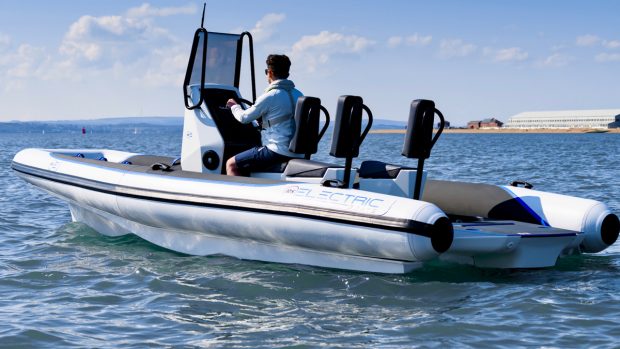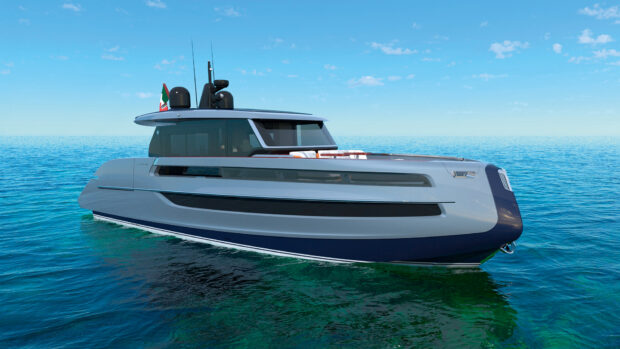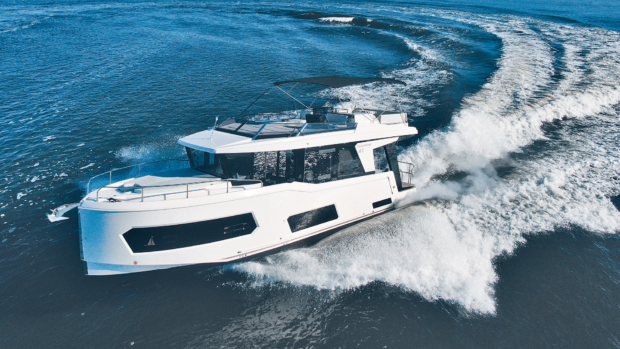Egret leaves Salvador after provisioning and refuelling
Position: 15° 06.28S 38° 22.40W
Course: 199°
Distance travelled: 3743.05 nm from Gibraltar
Average speed: 6.5 knots
Conditions: 5-7′ swells SSE
Scott and Mary Flanders left Gibraltar on 16 September, and we’ll be following their journey every step of the way, thanks to this unique online “blog”. For the first instalment of their diary, click here . Since leaving Gibraltar, we have been posting a diary entry every day in an effort to catch up with Scott and Mary, who were running ahead of the blog. Our last entry put them in Salvador, Brazil on day 34. They arrived there on 19 October. The couple then hopped on a plane and went back to Florida to catch up with family and visit the Fort Lauderdale Boat Show. They arrived back in Brazil a few days ago to provision and ready Egret for the next leg of the trip down to Cape Horn. They left on 2 November, and the latest entry we have for them, below, was sent on Friday 3 November. After today, all entries will be current.
The seas have subsided since yesterday. We now have two wave sets, one from the east and one from the south east. The waves themselves are gentle rollers but occasionally we meet at their convergence and jiggle a bit. Our well-researched and highly technical criterion for wave size and direction is how easy or difficult it is to carry a cup of coffee to the pilothouse. Today, no problems. With no fuel range issues Egret is treating herself to 1500 RPMs, giving her better handling than her mile stretching 1350 RPM’s. We have found in all but extreme conditions, Egret handles better the faster she goes.
There were a number of reasons for visiting Ft Lauderdale and the boat show, but one large one for the Egret crew was to resolve our exceptionally low engine rpm/heavy boat, stabiliser issue. We found long ago major boat shows are a good source of information from company officials, engineers, and knowledgeable staff. To get to the bottom line we have decided to upgrade to Naiad electronic control stabilisers. This will give Egret a major boost in stabilization efficiency. The Naiad tech won’t be available until November 27th so Egret is fast tracking the 2000nm or so trip to Mar del Plata, Argentina where the last large, easily accessible coastal city is located before the challenging weather further south. Here we will assist the tech in retrofitting the electronic upgrade. We will take the time to stop in a few places along the way. This early trip south will keep us on our loose schedule.
After heavy provisioning with fresh goodies, we cleared out of Salvador for Florianopolis, Brazil – our final Brazilian port. The customs officials bent over backward to clear the Egret crew.
Egret took on 2500 litres of diesel. This did not fill our tanks but will give Egret the range with a healthy reserve for this trek south (We have the remnants of our Atlantic crossing deck fuel in the tanks plus we still have 40 or so gallons in a fuel bladder behind the Portuguese bridge). We won’t use the bladders again until the 3000nm stretch from the Galapagos to the Marquesas Islands next spring. We wouldn’t actually need them for that trip, but we will take a few extra gallons simply because we have the bladders.
It is good to be at sea again. Life is simple out here. Salvador is a dangerous city along the waterfront. Salvador is two cities in one. There are educated citizens who are leading normal productive lives by anyone’s standards and then the very poor. This is the first port Egret has ever visited anywhere in our travels we didn’t feel good about the experience.
In a little over a month Egret will be in Peninsula Valdes, Argentina. Here the adventure begins in earnest. This will not be recreational boating. We will fasten our seat belts. It is going to be a wild ride.









